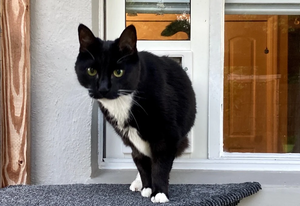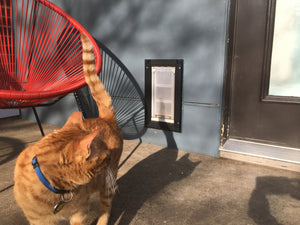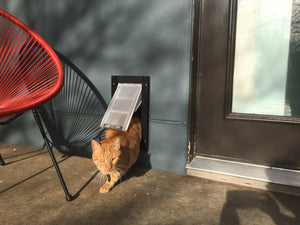Do Female Cats Spray?
Everybody wants a cat, but no one wants to deal with their cat’s bathroom habits, especially when it’s outside the litterbox. Seasoned cat owners might be prepared for their cat’s inappropriate peeing but new cat parents might be surprised to find their cats spraying.
But even veteran cat owners may be shocked to realize that both male and female cats spray.

What Is Spraying?
Spraying (also known as marking) is a common behavior for both male and female cats to mark their territory, especially when they live near other cats. Unlike normal bathroom breaks, spraying involves urinating outside of the litterbox vertically.
There are a few ways to tell when your cat is spraying as opposed to having a bathroom accident. Your cat is spraying when:
- Your cat pees on a specific item or area, like a wall, a piece of furniture, or toy. The marked item in question will often be a high traffic area or be highly coveted by other cats, and vertical.
- Your cat makes deliberate moves to pee on the item by standing up, raising its tail, quivering, then finally backing up to pee directly on the item.
- Your cat pees only a small amount, as opposed to a steady stream that occurs when they are relieving themselves
If your cat is exhibiting all of these behaviors, then they are marking their territory. If they seem to just be having an increased number of bathroom accidents unassociated with spraying, then you should take them to a veterinarian to be examen for any health issues.
Why Do Female Cats and Kittens Spray?
Despite the difference in gender, female cats spray mostly for the same reasons as their boy counterparts.
Spraying urine is a way for all cats to mark their territory. While there is very little hierarchy among cats, it is still important for them to have a sense of ownership over their things. If they are experiencing new stressors, then your cat is more likely to start spraying.
Environmental stressors can include a lot of things that humans would not find stressful themselves, such as:
- A new member being added to the family, either human or animal
- Loud noses, such as those from nearby construction
- Boredom from lack of playtime or enrichment (which can be solved with a cat door leading to an enclosed catio)
- Bathroom issues, such as litter they don’t like or a friendly cat denying them access
Any kind of stressor is a cause for spraying. Female cats in particular may start spraying when they enter their heat, as the smell of their urine is meant to attract mates.
How Do I Stop My Female Cat From Spraying?
Inappropriate urination can be difficult and frustrating to deal with, but it’s not unsolvable. If you haven’t yet, spaying a female cat will decrease the chances of them spraying significantly. This is because this hormonal shifts decrease your cat’s stress, especially in response to territorial responses.
However, about 5% of female cats will continue to spray even after they have been fixed.
There are a few other less surgical ways to reduce spraying, all of which involve reducing your cat’s stress levels, including:
- Neutralize any remaining urine odor with an enzymatic cleaner to discourage your cat from spraying the same spots over and over again
- Change your litter or litter box to what makes your cat more comfortable, such as switching to uncenter litter or putting the litterbox in another room for privacy
- Use pheromones or anxiety medications made to help chronically stressed cats to relax




